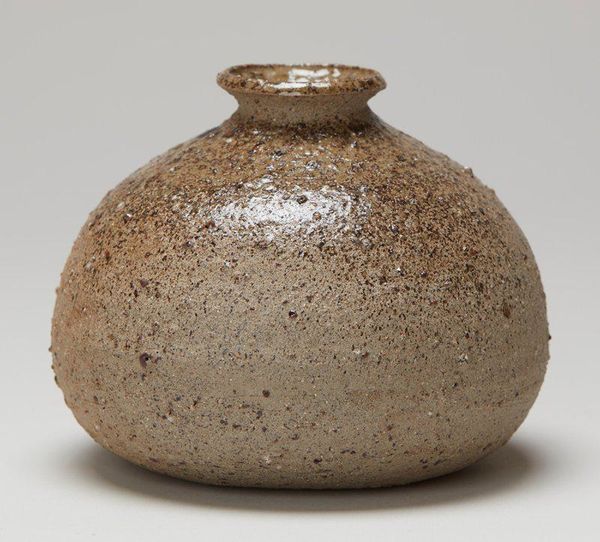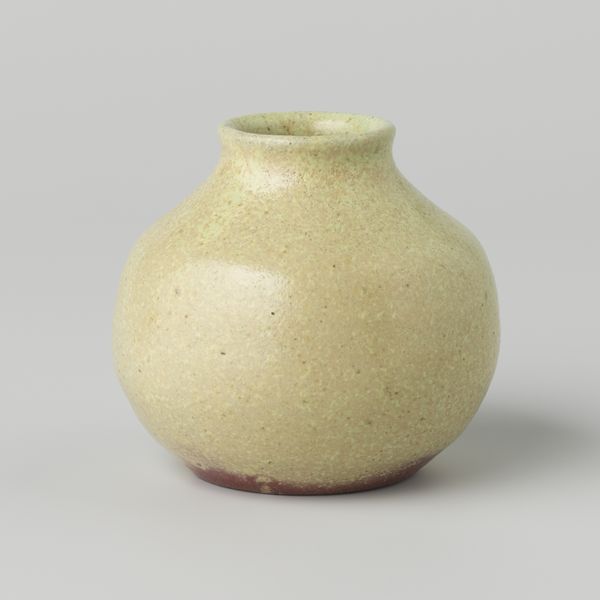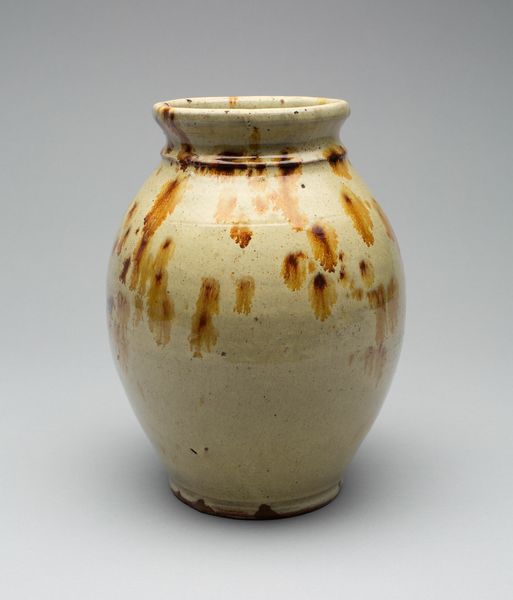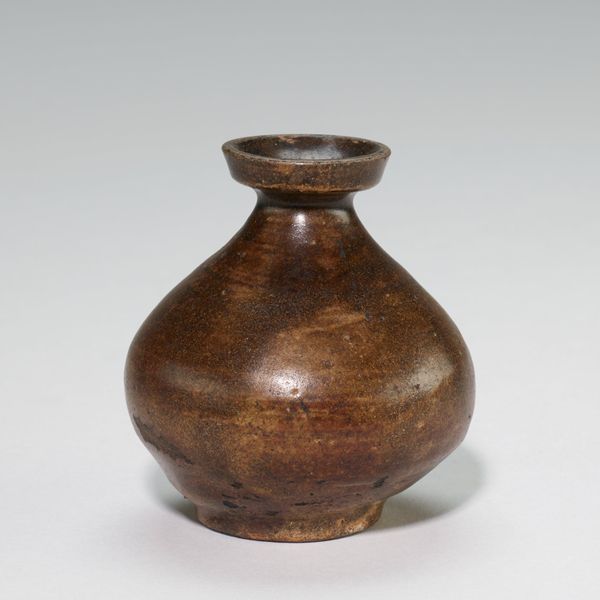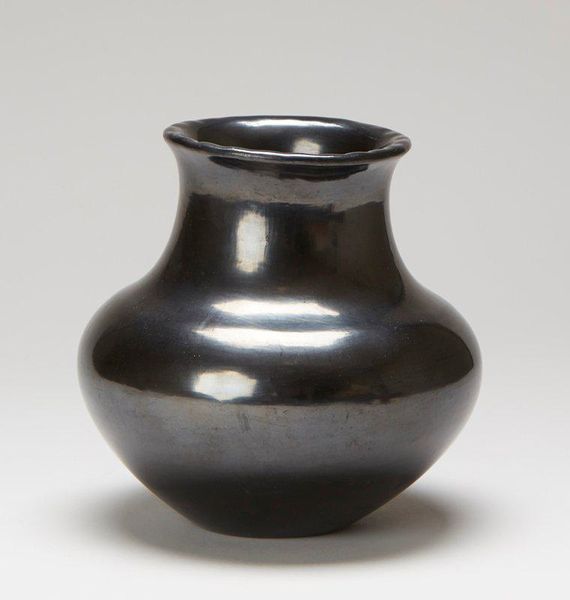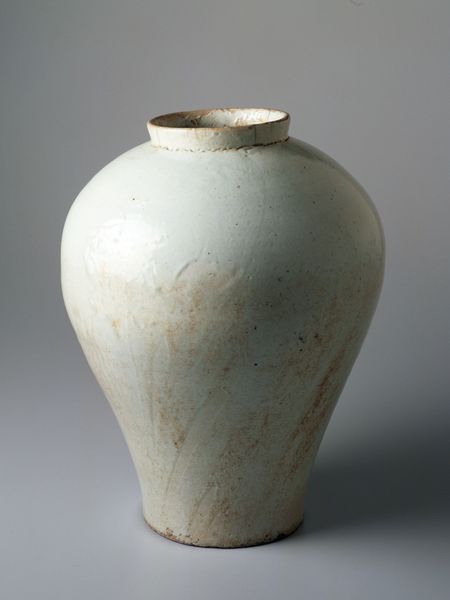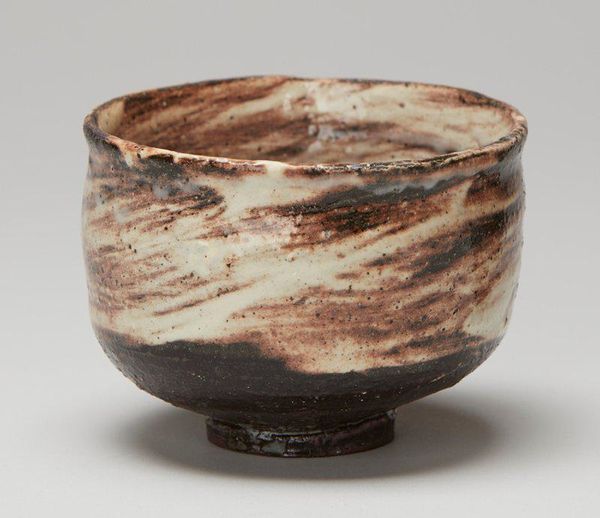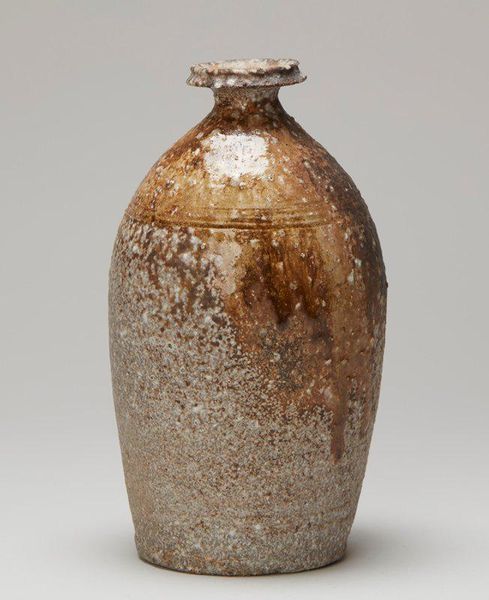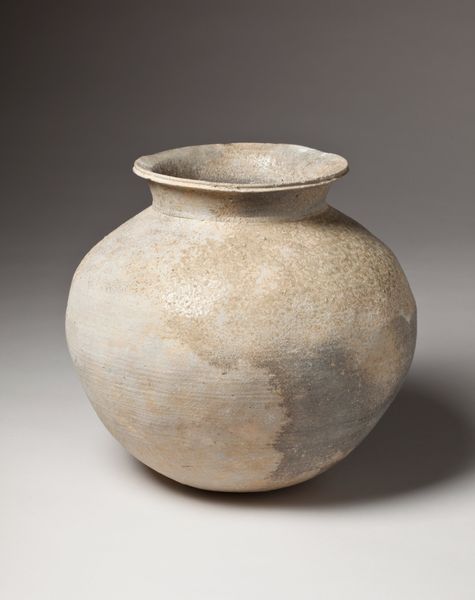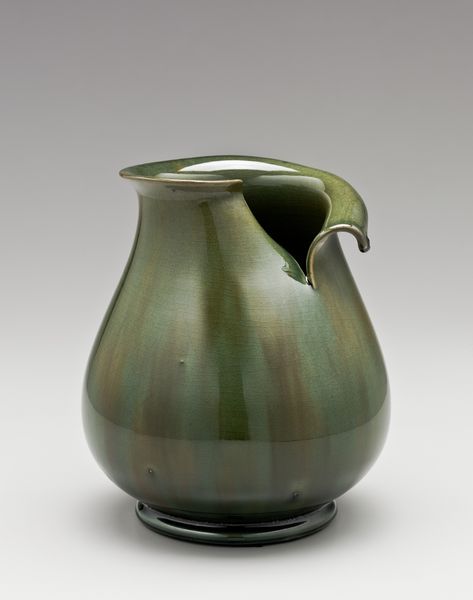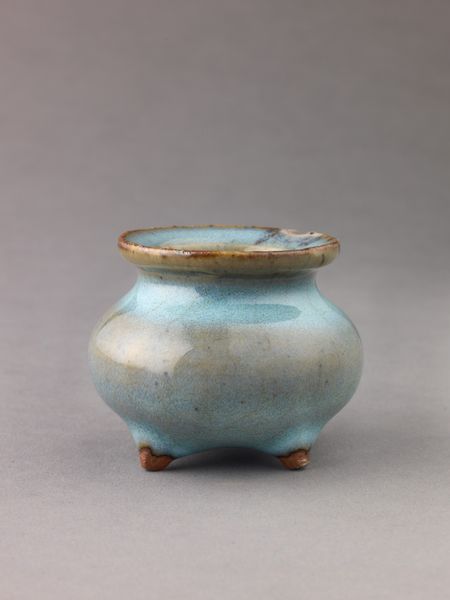
ceramic
#
asian-art
#
ceramic
#
japan
#
stoneware
#
decorative-art
Dimensions: 3 1/16 x 2 1/4 x 2 1/4 in. (7.78 x 5.72 x 5.72 cm)
Copyright: No Known Copyright
Editor: This stoneware tea caddy, attributed to Sugimoto Tatsuo around the 20th century, is captivating. I'm struck by the textures and gradients across the vessel. The rough, almost geological formations near the base contrast with the smoother, burnished areas. How do you read this piece, considering its focus seems so deeply rooted in materiality? Curator: This work demonstrates an emphasis on pure form and the inherent qualities of the medium. Note the cylindrical body and its almost imperceptible taper upwards towards its narrower mouth. The glaze, or perhaps the lack thereof, accentuates the clay's raw, earthy characteristics. The surface variations, seemingly accidental, establish a compelling visual rhythm. Observe the clean, simple lines of the lid, contrasting the rough texture of the body. Does the colour gradient bisecting the container change your reading? Editor: I do wonder about the intent behind that divide – the shift from the dark, almost volcanic texture on the left to the smoother, warmer tone on the right. Curator: Exactly. It’s as though the artist aimed to reveal the essence of the stoneware itself, through this dynamic interplay of texture and color. The semiotic element lies in how each material component communicates; its volume, mass, and visual presence invite engagement. Think about its aesthetic impact rather than seeking external symbols. It is very pleasing, no? Editor: I see what you mean. By focusing on the object's components – the textures, shapes, and transitions – a clear narrative emerges that highlights the materiality as the primary message. Curator: Precisely! We have moved towards seeing an objective beauty by looking at the visual properties. What an accomplishment.
Comments
No comments
Be the first to comment and join the conversation on the ultimate creative platform.

